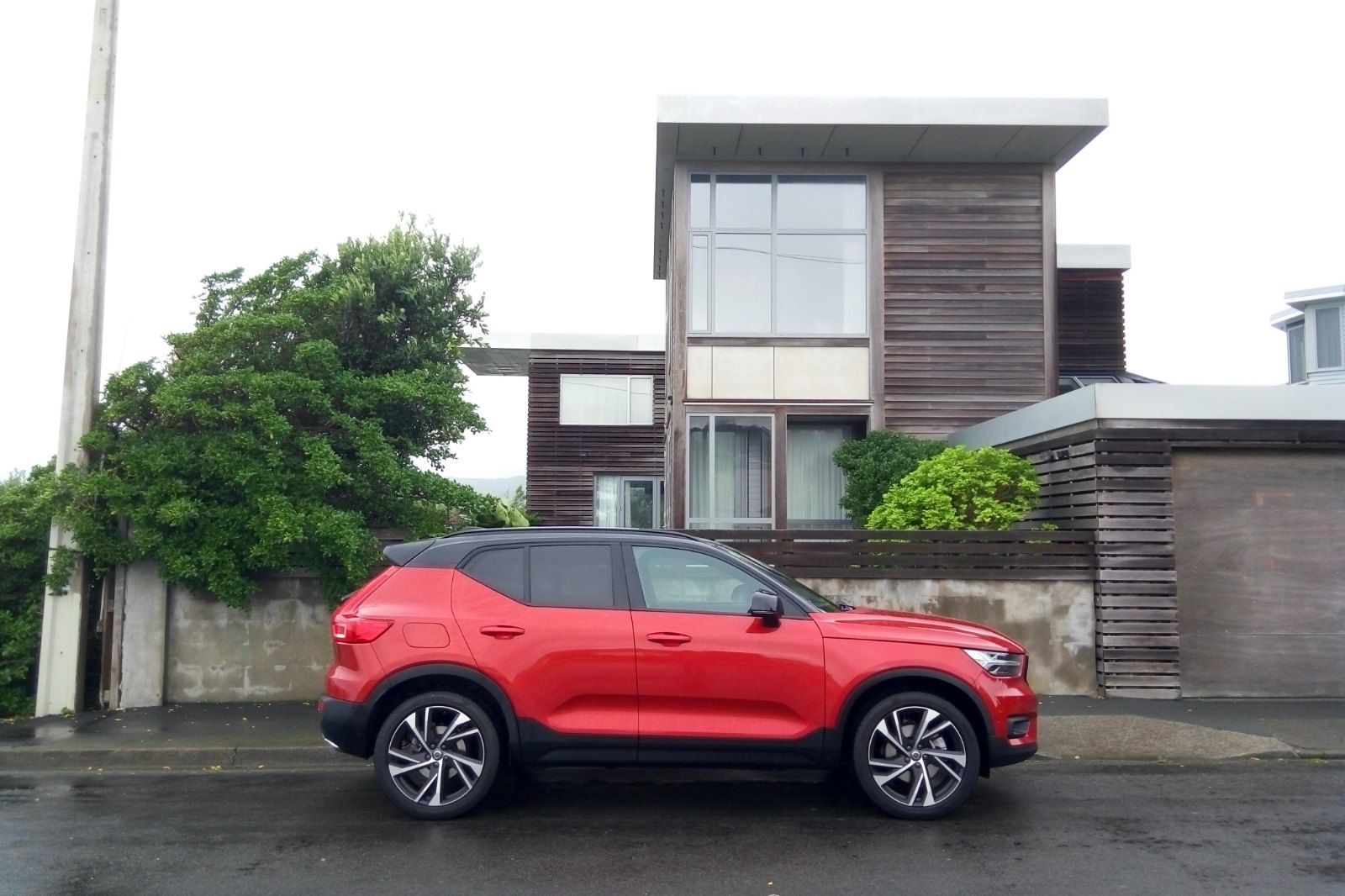
LIVING The Volvo XC40 really is a leap into the future, not just for the brand, but for how cars in general can be, as we approach the 2020s, writes Jack Yan
Photographed by the author
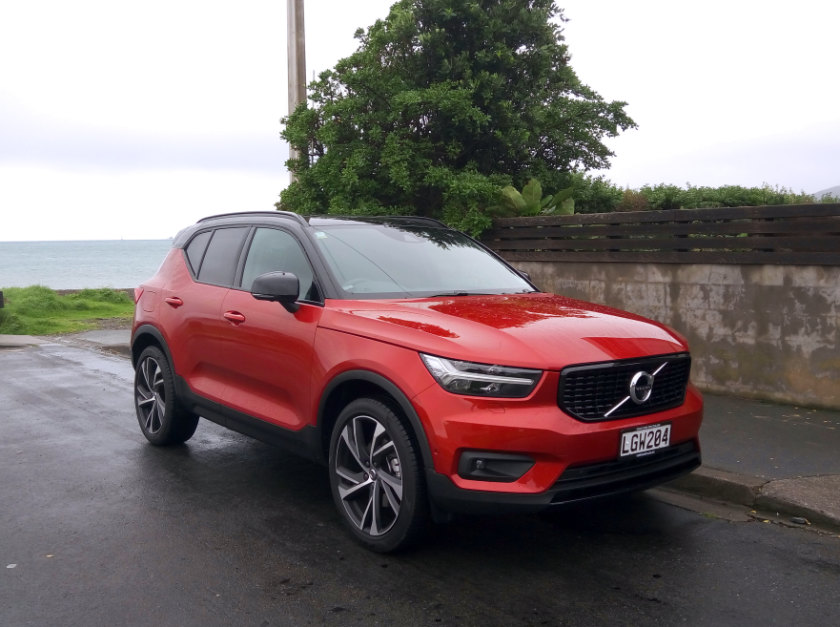
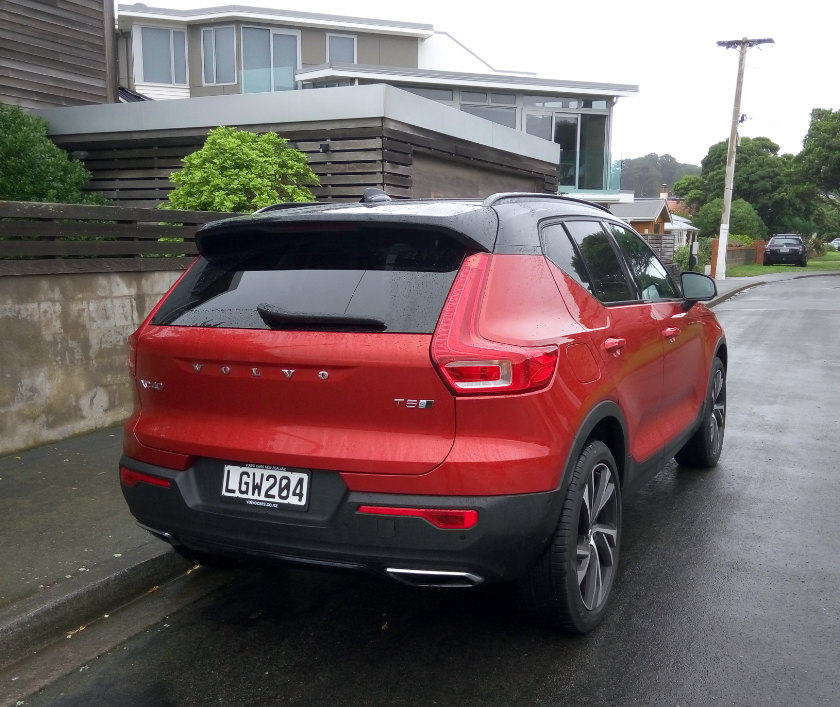
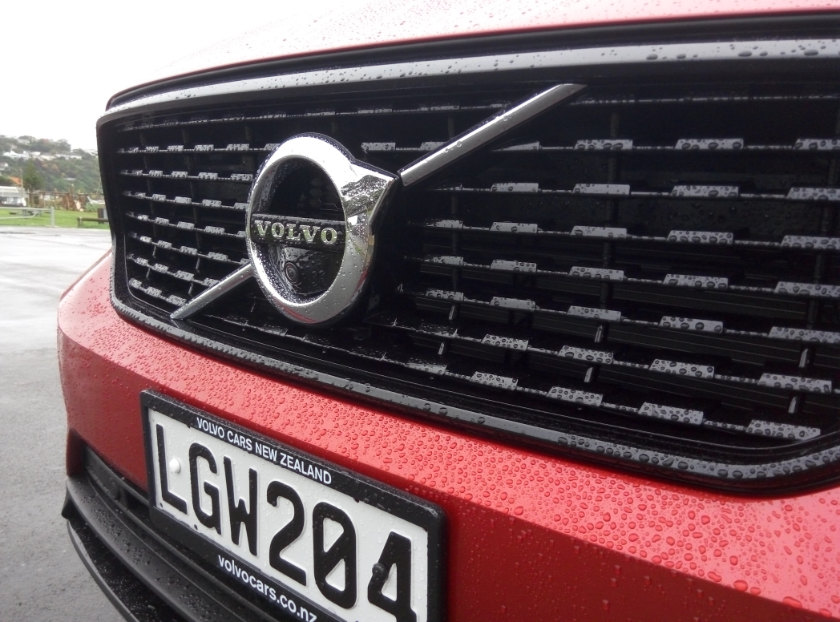 Chunky on the outside, a modern interpretation of Volvo’s brand values. It’s a commentary on the urban landscapes of modern life
Chunky on the outside, a modern interpretation of Volvo’s brand values. It’s a commentary on the urban landscapes of modern life
Jack Yan is publisher of Lucire.
One lament that I had in the years I’ve been testing cars is that the technological advances seem fairly few and far between. When I began driving, it was a 1970s British car with 1960s tech, and when the family bought an Opel Vectra A, I noticed the 20 years’ advance. And you can argue that by the 2000s, another 20 years, cars had become more refined, more comfortable, and far safer, but I didn’t feel the same leap forward. To a layperson, you could swap out the tape deck for a CD player. The Vectra’s electric windows could wind up with a single touch, a feature that wasn’t even on the last Ford Falcon in 2016. Luxury brands like BMW had head-up displays, but then, so did the 1988 Oldsmobile Cutlass Supreme as an option, and the 1991 Toyota Crown Majesta as standard. In the 2010s, the South Americans and Chinese are still selling cars on the budget end with decades-old tech but slap an infotainment screen in the centre as a concession to modernity. Even my 2012 desktop computer, with a solid-state drive upgrade, doesn’t feel that much slower than what’s in the shops today, yet a 1989 Commodore Amiga was on a different planet to the 1983 Commodore 64. In the words of many Doctor Who scripts, ‘Something has happened to time.’
Don’t get me wrong: most test cars have been an absolute pleasure to sample. Even if the world hasn’t advanced as quickly in the last two decades, there’s still plenty to write about, and get excited about. The incremental changes—more computer controls through that central screen, all-digital dashboards, increasingly sophisticated suspension, improved ride and handling—all make the motoring experience more worthwhile.
And it was with these eyes that I hopped into the Volvo XC40, the Swedish brand’s latest entry into the crossover SUV market, and aimed at a younger buyer than its existing XC60 and XC90 models. It’s more compact, but not by as much as you think (39 mm narrower, at 1,863 mm; and 6 mm lower), and kicks off a new design language, of voluminous shapes, subtle creases, a big C-pillar, and boxy styling, but with more panache than the Volvos of old, such as the 145 and 245.
Would I like to be taken through some of the XC40’s features? I answered in the negative: ‘The last one I drove was the S60,’ I replied, expecting the XC40 would have the sort of incremental improvement between previous models. We’ve had a V50, the first XC60, the Y555 V40 from 2013, and the outgoing S60 as test cars, and there was no massive leap between each one. Surely four years since the S60 wouldn’t make that big a difference?
‘It’s very different to that,’ said Dan Smith at Armstrong Volvo in Wellington, who had the keys to the press car, a T5 AWD R-Design Launch Edition. I thought it was a salesman’s hyperbole. Then I stepped inside. He was right.
They say that it’s often the second decade in each century that truly represents that century. The first decade is just a hangover from the previous century, with those earlier values still influencing life. And maybe that explained the cars of the 2000s. But, finally, here is a car that fulfils the promise of the 21st century, what we might have imagined “the car of the future” to be as children.
We ran an article last year on the XC40’s interior, on its use of sustainable felt and diamond-cut metal. And it’s done to wonderful effect. The aluminium inlays in the cabin aren’t to everyone’s tastes, but they make the interior stand out. The perforated leather–Nubuck seats and leather steering wheel give a far more premium feel than any previous Volvo we’ve tested. The portrait-oriented nine-inch infotainment screen dominates the centre console, flanked by two chromed vertical vents. While those of us of a certain age might recall the vertical Edsel grille and uncharitable comments made about it, this is a design statement that has function. Gone is the floating button panel—which was never that great to use—in favour of a visual modernity. The gear shifter is compact, also with perforated leather. Switched off, the instrumentation in the binnacle reveals only the briefest of information (inter alia, temperature and time), but then it comes to life once the car starts. We’ve seen digital dashes before, but the resolution and clarity here are excellent as the system draws two dials, the animation shifting and shrinking the speedometer and rev counter to each side as the sat-nav map takes centre position. The rendering is so good the eye sees these dials as sharply as though they were analogue ones, albeit better lit—there is no clumsy rendering here that distracts.
This is a proper jump into the 21st century, the sort of feature that Mercedes-Benz, Audi and Range Rover have been proud of with their interiors, but here is a vehicle in the NZ$80,000 region that rivals more expensive models with the tech. And we’re not even up to the XC40’s party trick yet.
continued below
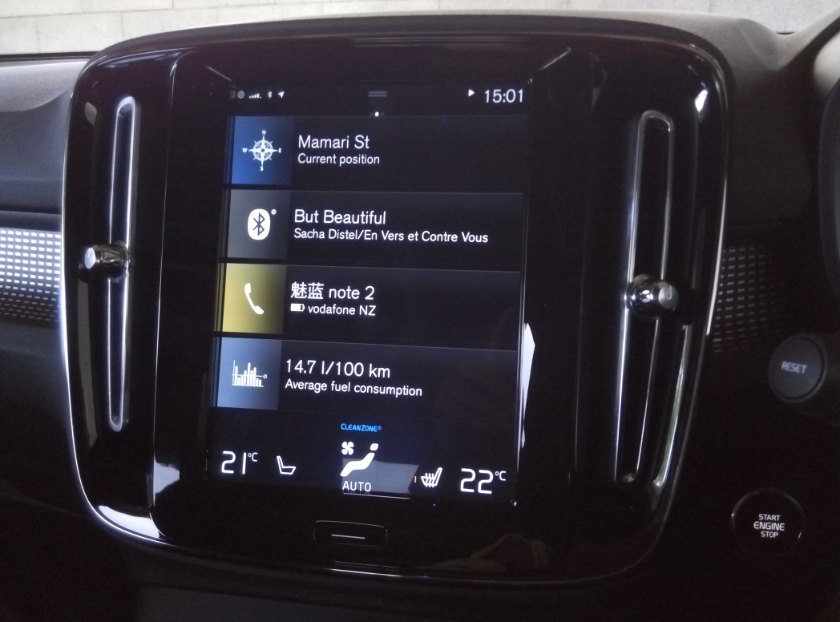
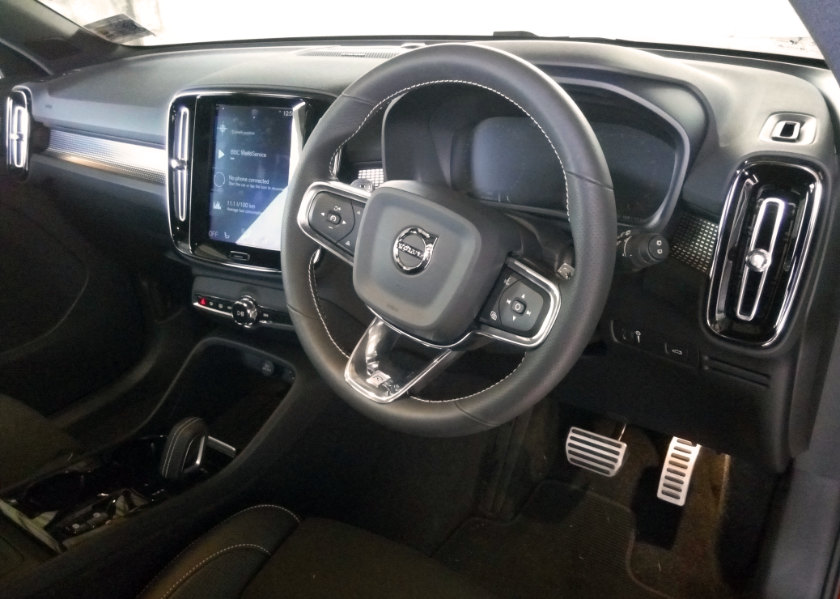
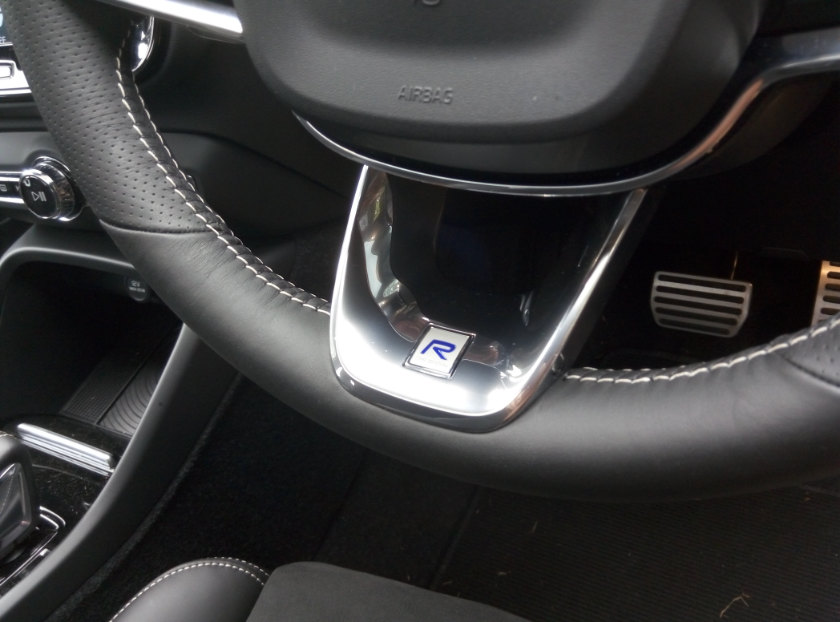
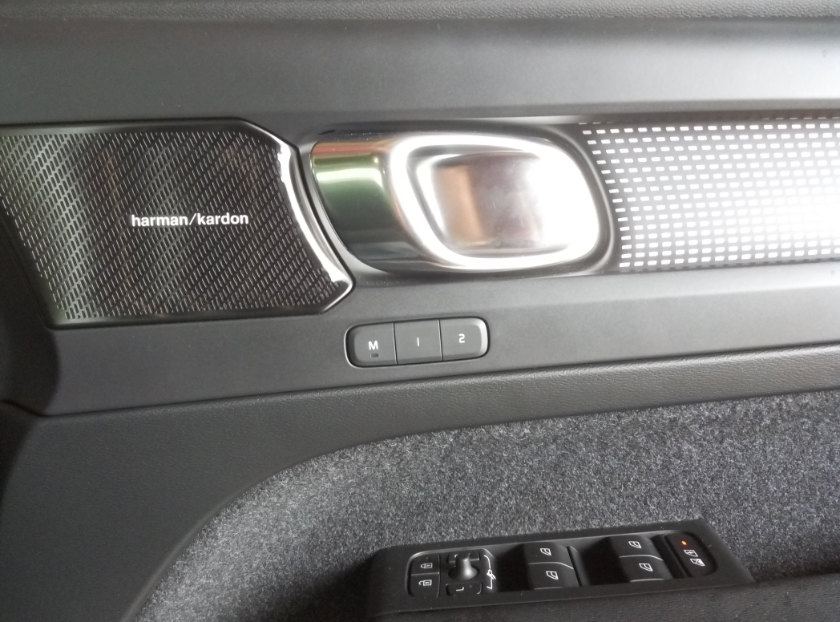
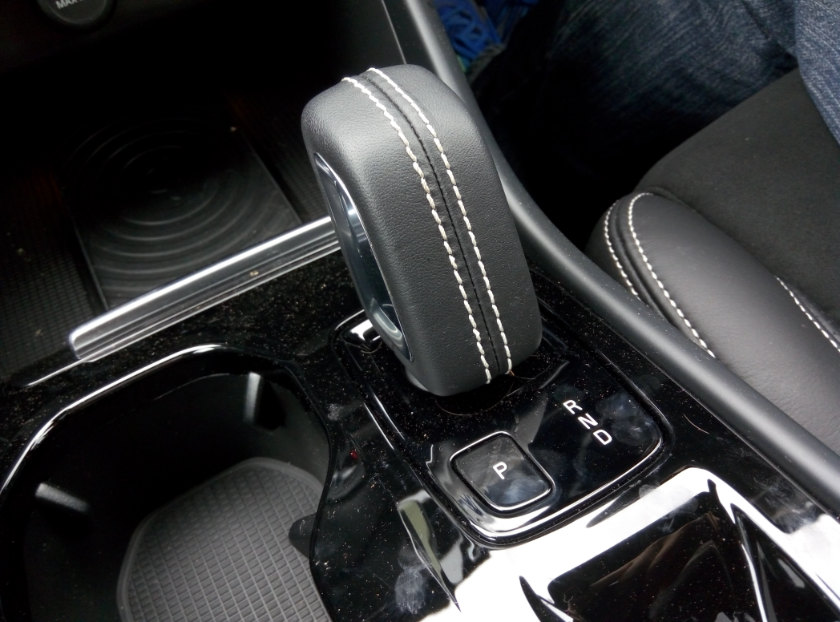
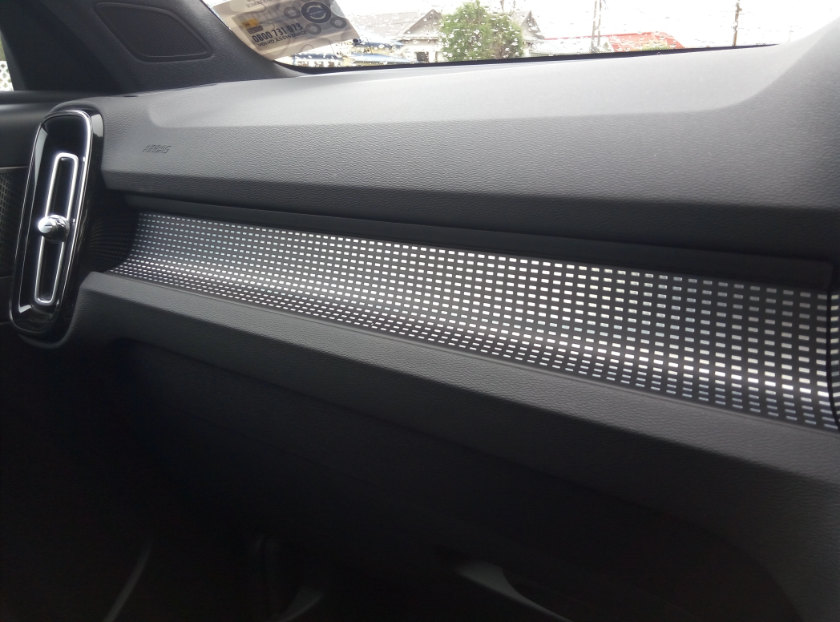
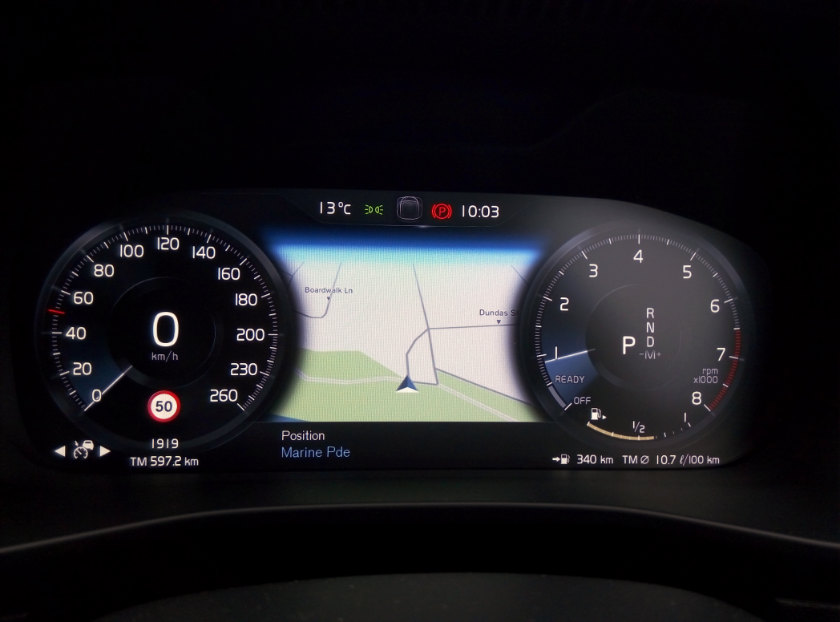 The interior is breathtaking in reality, with the fully digital 12·3 in dashboard, and perforated leather
The interior is breathtaking in reality, with the fully digital 12·3 in dashboard, and perforated leather
The screen is particularly useful, with the usual information that you expect: current location, the entertainment (Bluetooth, or the standard digital audio, were the options we tended to rest on), the phone that’s connected, and, in our case, the average fuel consumption. The bird’s eye view (officially the 360° Camera, part of the Launch Edition package), where the car uses its cameras to render a fairly accurate image of its position, makes great use of the portrait format. There is parking assist, of course, but it took some time to become familiar with it, and we were only able to do one perfectly during our test. But with the camera, parking by yourself is a breeze anyway.
Volvo has been careful with its typography, using its in-house Volvo Sans (clearly based on the sans serifs of the 19th century, such as Akzidenz-Grotesk) on the infotainment screen, and the instruments have a very clear sans that has appeared on the company’s cars for decades, even the 740 and 760 of the 1980s. This is the sort of attention to detail design-conscious buyers expect, and which continental brands do so well—and British ones do not (Jaguar, Land Rover, Aston Martin and MG are all lacking on this front, all employing some off-the-shelf designs in their interiors).
The interior will appeal to the younger buyers that Volvo seeks, and the company’s claims about starting with a clean sheet certainly has credence: it cannot be mistaken for anything else, and in a good way.
We also enjoyed the panoramic sunroof, although the cold weather meant we only sampled this sparingly. With Android Auto and Apple Carplay, it has its bases covered, and we hooked up the Meizu M2 Note without issue. With Volvo’s masters now in China (it is a subsidiary of Geely, along with Lotus and LEVC, the producer of the TX London taxi), the XC40 is perfectly happy with a Chinese-market phone, and Chinese script displayed on the screen as though it was native. If your phone is compatible with wireless charging, the XC40 has you covered.
The tailgate opens for a keyholder with a kick below the bumper, on the left side, and unlike the Holden Equinox we recently tested, the XC40 obliged on the first attempt each time. You need a bit more practice on the other vehicle, but then it does cost NZ$20,000 less. If you’re saving that much, an extra kick shouldn’t matter.
Once on the road, it becomes evident that Volvo emphasizes comfort over sportiness, and that’s no bad thing. Handling is still very competent, with very good grip from the all-wheel drive. The multi-link rear suspension gives a lot of confidence, keeping the XC40 firmly planted on the road. The XC40 does what you ask of it, the 247 PS (182 kW) two-litre turbo more than capable of shifting the vehicle, but it’s all done without fuss. Where the S60 R-Design was raw, this is thoughtful. We managed 26·9 mpg (10·5 ℓ/100 km)—buyers of the T5 model won’t be looking at fuel economy very closely.
There was some road noise from the 20-inch wheels, but the quality of the Harman Kardon sound system left little to be desired, and your mind quickly goes to enjoying the music.
The heated front seats are welcome in colder climates (and Sweden beats us here in New Zealand for chilly winters), while the sat-nav is accurate and practical, appearing in front of the driver.
It’s behind the wheel that Volvo’s famous safety features become very apparent. The lane-keeping aid is becoming more mainstream, and worked unobtrusively, but the collision warning, although adjustable, could be overcautious: on Wellington’s coastal roads, for example, there were some corners where the XC40 sounded its alarm thinking a collision with a parked car was imminent, when the reality was that I took a corner more rapidly than what might be considered normal. There is a higher centre of gravity, and Volvo probably made things more sensitive in consideration of that.
While lane-keep assist is the party trick for the everyday Opel Astra K, the XC40 goes a step further. Adaptive cruise control is standard, and not that new a feature in the world of cars, but here is a vehicle, with the Launch Edition’s base price below NZ$80,000, that has what Volvo calls Pilot Assist. I won’t go so far as to say it drives itself, but, in certain safe circumstances, that is what it does. Turn it on, and watch the car keep within its lane, maintain a safe distance between itself and the vehicle in front, making minute adjustments to the steering wheel. I took my hands off and let the car figure things out, and, being a Volvo, the millisecond it thinks it needs help, it sounds a beep and asks you put your hands back on the steering wheel. The team effort works—it’s worth remembering that Volvo’s bigger XC90 is one of the safest vehicles in the world, with no one killed in one in the US last year. (Even the previous model was incredibly safe, with no fatalities recorded in the UK over 14 years, despite 54,000 sold there.) However, I’m not sure how relaxed you are in this whole process. I might like the technology, but I’m not prepared to surrender my safety completely over to it, and all this was done with staunch vigilance. It’s called assist, after all, not auto pilot, and that is an important distinction. It works best when the lanes are very clearly marked—think nice stretches of Autobahnen like the ones near Frankfurt—which we don’t have a lot of in New Zealand, not even on State Highway 1 out of Wellington. Frankly, neither do the Swedes—though the Chinese do.
I did let Pilot Assist drive part of the way to Lower Hutt from Wellington on the motorway, and accept that it won’t be long before driving becomes something we might do for leisure, with the car doing more of the repetitive daily grind. The benefits will be immense, for example for those with epilepsy, and who better than a company absolutely committed to safety and the environment? Volvo still wants to have "death proof" cars by 2020, where no one is killed or seriously injured by one of its new cars. This is bound to be positive for Geely and its new brand, Lynk & Co., whose 01 model shares its CMA platform with the XC40.
It’s rare for me to end a review dealing with a car’s styling. Usually it’s the first thing I tackle. But then the XC40 is not your usual sort of car.
The subtle details are great: the R-Design insert in the C-pillar, the blacked-out roof rails and roof, the integrated tailpipes, and special blacked-out R-Design front grille. The 20-inch wheels house unique diamond-cut R-Design alloys with matt black features. The cabin tapers ever so slightly toward the back, which emphasizes a feature line there. The way the C-pillar reaches the waistline is reminiscent of Swedish furniture, a lasting legacy of designer Peter Horbury’s work on the second V70, at the time the standard Swedish family car. The thickness of the C-pillar itself (the chunkiest and largest on any Volvo?) was a cause for concern, but with the XC40’s safety gear, it was never a problem: the reversing camera has a wide angle and beeps to alert you of approaching objects. The rear lights looked ribbed and look great when switched on; the front daytime running lights have what Volvo calls its ‘Thor’s hammer’ shape on each side (looking like the letter T on its side). These are all touches for those who love design, and they work. Ian Kettle, the man behind the XC40’s exterior, has given Volvo a welcome, new interpretation of design chief Thomas Ingenlath’s language.
continued below
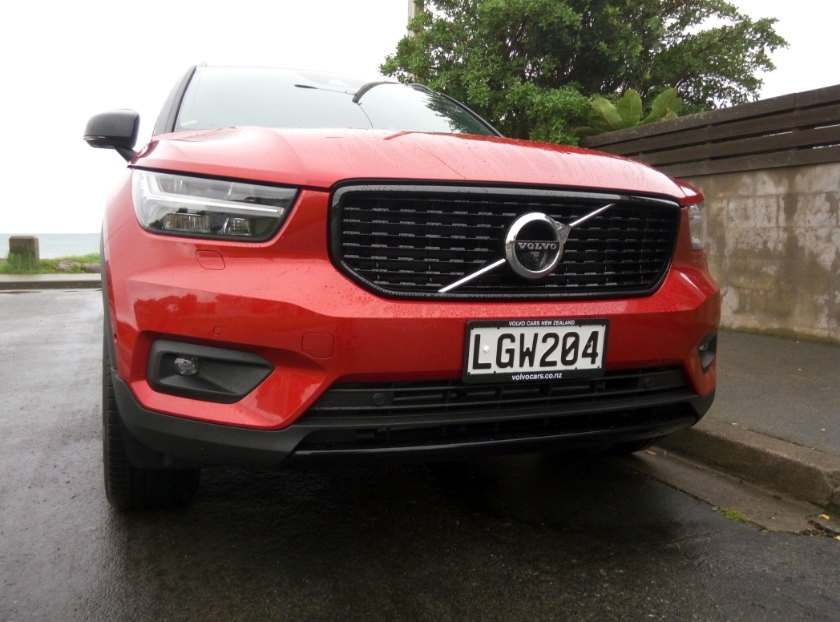
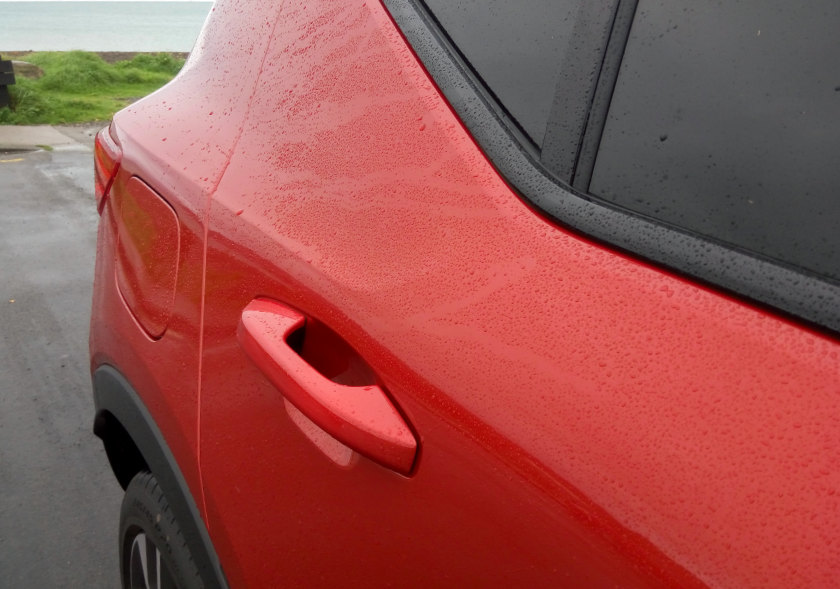
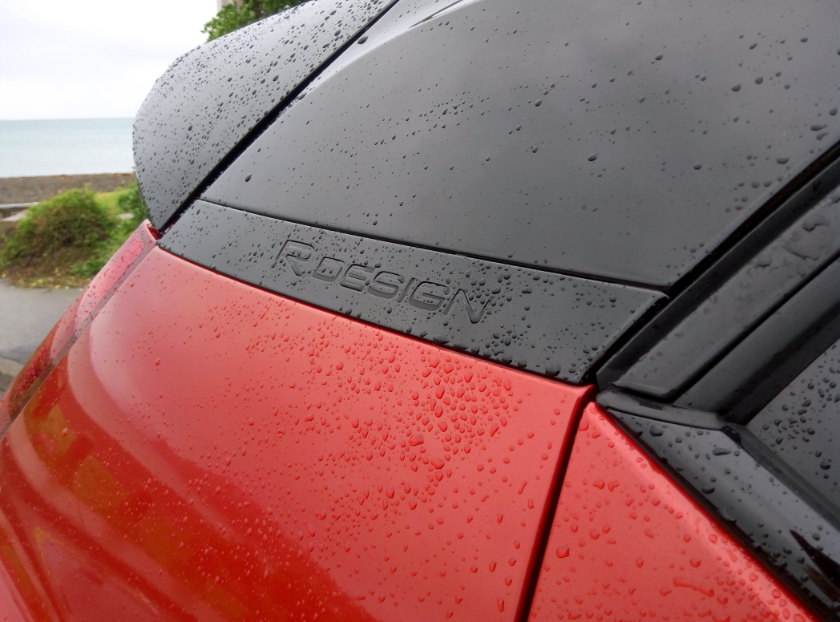
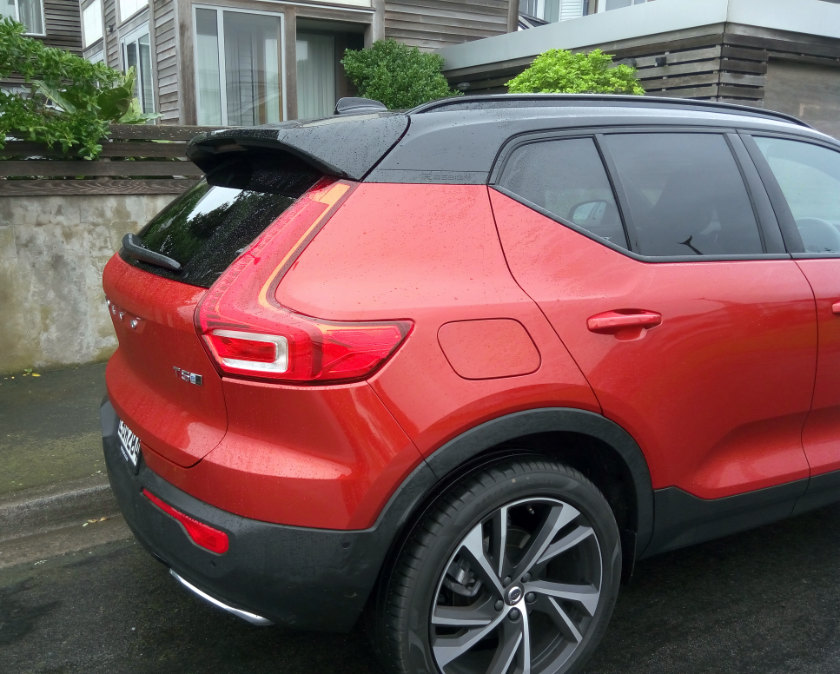
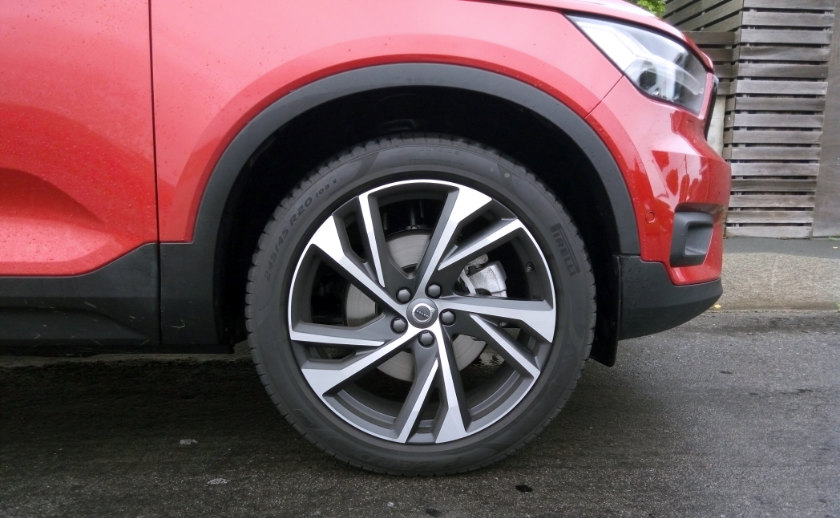
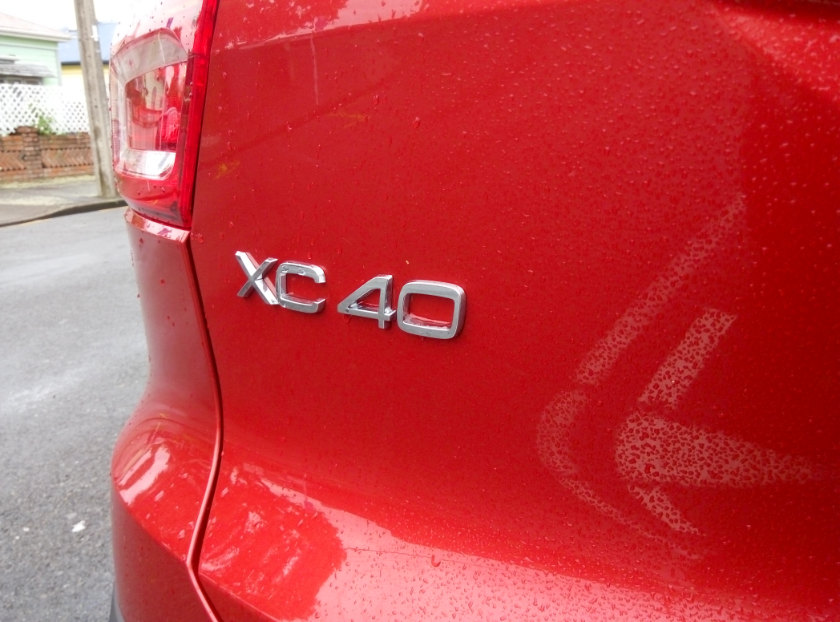
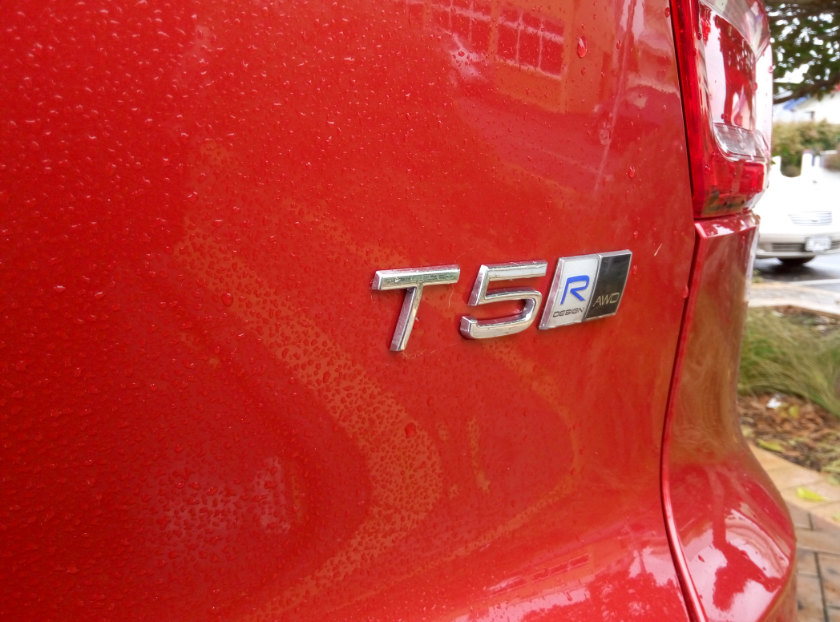 Neat exterior details, including a kick in the waistline recollecting the P1800, and a massive C-pillar
Neat exterior details, including a kick in the waistline recollecting the P1800, and a massive C-pillar
What’s also wonderful is that the dip in the waistline recalls one of the most famous Volvos of them all: the P1800 sports’ car, as driven by Roger Moore as Simon Templar in the 1960s TV show, The Saint. It’s a tiny touch, and integrated less obviously than on the V40, but Volvo fans will love it.
However, overall, this is not a Volvo with retrolutionary cues. It’s not about telling a story about its past, making some statement about its brand. Volvo wants conquest buyers here, who don’t want the old story retold. This is, very much, a car that wants to tell a story about the future, one where design rules and the urban environment need not be drab and grey, but vibrant and eye-catching. Where tech is helpful as well as novel. Where there’s a sense of social responsibility, too, for its occupants and the environment. The XC40 is a delight for the senses, all while doing right by the society we live in. That makes it very relevant indeed. •
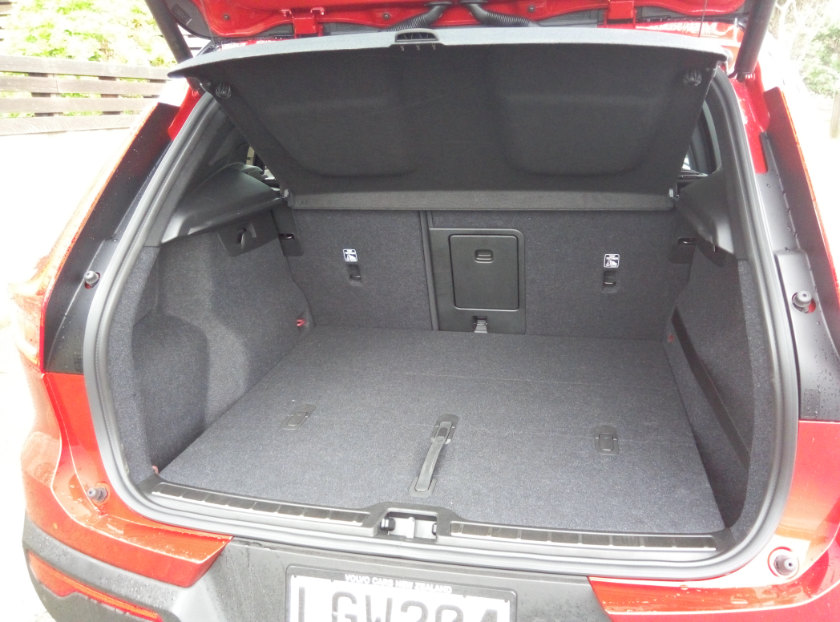
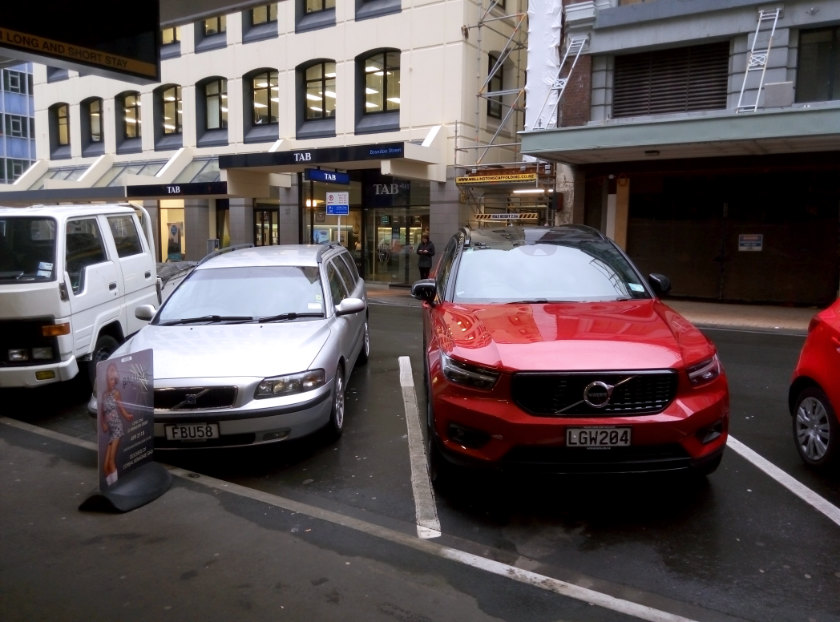 Top: Reasonably sizeable boot, with useful straps keeping loads secure. Above: The second-generation V70 (left) was part of Volvo’s new design language—a decade and a half separate it from the XC40.
Top: Reasonably sizeable boot, with useful straps keeping loads secure. Above: The second-generation V70 (left) was part of Volvo’s new design language—a decade and a half separate it from the XC40.
Related articles hand-picked by our editors
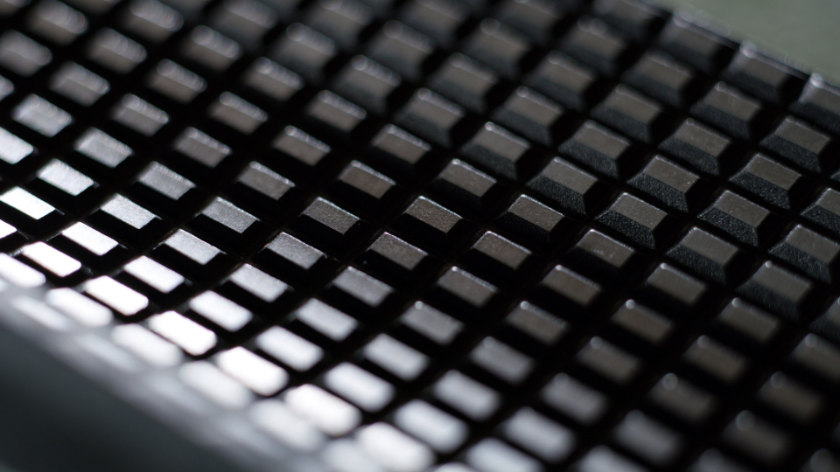
Volvo teases XC40 with discussion about interior, promises more choice and colour
No exterior photos yet, but Volvo promises a more exciting interior to attract new, younger customers
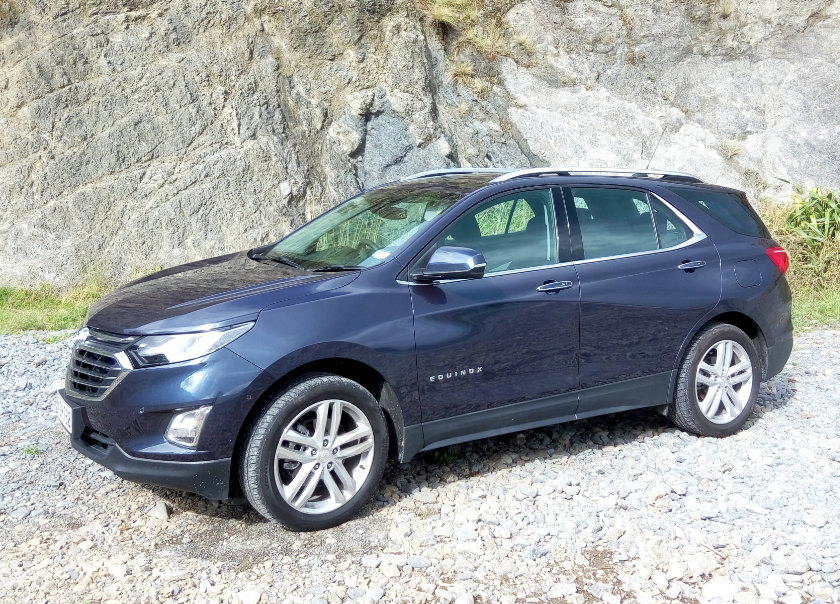
Power supply
Jack Yan tests the Holden Equinox LTZ-V, and comes away impressed with how complete a challenger GM has managed to create
Photographed by the author
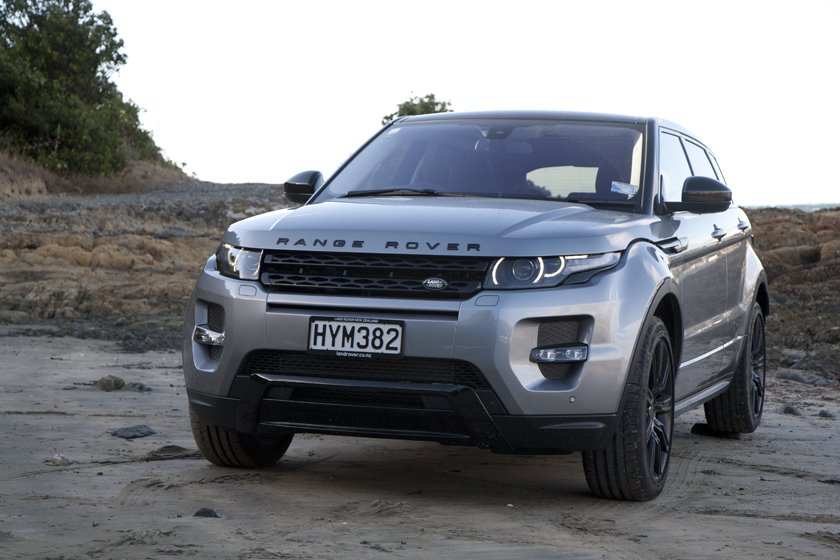
Range Rover Evoque: still fresh, more stylish, surprisingly capable
Jack Yan samples one of Lucire’s most acclaimed SUVs, in the form of the 2015½ Range Rover Evoque Si4 with Black Pack, and throws more than what you might expect at it
Photographed by Stuart Cowley
Advertisement
Copyright ©1997–2022 by JY&A Media, part of Jack Yan & Associates. All rights reserved. JY&A terms and conditions and privacy policy apply to viewing this site. All prices in US dollars except where indicated. Contact us here.